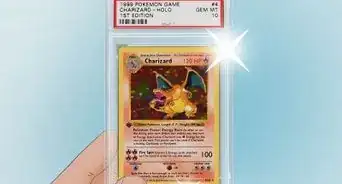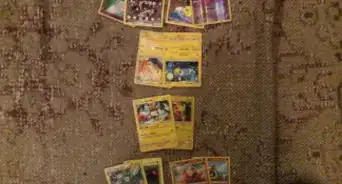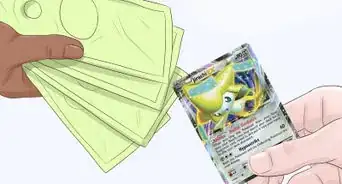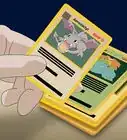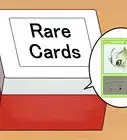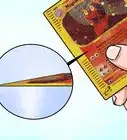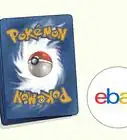This article was co-authored by Madeleine Flamiano. Madeleine Flamiano is a Role-playing Game Enthusiast based in Berkeley, California. She has over 20 years of gaming experience and is an avid gamer in all parts of her life—she's especially fond of tabletop board games and the world of Pokémon. Pokémon Crystal Version is her favorite game in the franchise. Some of her greatest feats were evolving Eevee to a Level 99 Umbreon and collecting every legendary bird Pokémon. Her professional path started at NaNoWriMo, where she scripted a summer-long world-building series and hosted its Virtual Write-Ins. She has written seven books for DDCO Publishing, which specializes in LitRPG and is operated by New York Times Bestseller JA Cipriano. She has ranked in the Top 100 list for Dark Fantasy, Sword & Sorcery, and Fantasy Romance. She was voted by her peers as "The Perfectionist" on Roleplay Adventures, a SERP for forum roleplaying. Madeleine graduated from Mills College with a B.A. in English with a concentration in Literature and a Minor in Philosophy.
There are 15 references cited in this article, which can be found at the bottom of the page.
wikiHow marks an article as reader-approved once it receives enough positive feedback. In this case, several readers have written to tell us that this article was helpful to them, earning it our reader-approved status.
This article has been viewed 415,974 times.
Collecting Pokémon cards is a fun, interactive hobby for anyone and everyone. These Japanese "pocket monster" cards can be used to play the Pokémon trading card game or you join the people across the world collecting cards to try and "catch 'em all"!
Steps
Buying Cards to Begin Your Collection
-
1Decide what kind of cards you want to collect and for what purpose. Trading cards often have dual purposes and for Pokémon cards, you can either collect the cards for the fun of hunting them down or you can collect them so you can play the Pokémon Trading Card Game.[1] If you only want to collect and display cards, you have the freedom to go in any direction with the kinds of cards you want. You can collect based off of Pokémon types, card values, sets, or any category you can think of. [2]
-
2Have a target list of what you want to collect. Some people exclusively try to collect rare or special cards while others are looking for certain types of Pokémon or want to catch them all. Being more specific with your list can help narrow down your search among the 900+ Pokémon that currently exist. As you start out, keep in mind that there are different rarities for cards. 'Rarity' is a term used to determine how hard a card is to find and the rarity is marked on the bottom right of the card with a symbol:[3]
- Easier to find cards include common (black circle mark), uncommon (black diamond), or rare (black star).
- Harder to find cards are either holofoil rare (black star with holographic art), ultra rare (white star), or secret rare (rarity symbol with a serial number).
- Some of the most sought-after cards are either full art (cards with only art), EX ('EX' is next to the Pokémon name), or reverse holos (holographic sheen is on everything but the art). These cards are limited edition and can be worth a lot of money in mint condition.[4]
Advertisement -
3Research what kind of cards are currently in print. It's easier to start collecting the most recent printing of cards because they are more widely and readily available. Pokémon cards are released in sets when they are printed by the manufacturers but the sets are spread out across the world in separate packs of cards, such as starter or booster packs. Many people aim for collecting a whole set; there are generally 102 different cards per set. Be aware, sets can also have expansion packs that extend the list of cards you will need to complete that particular set. It is easier to collect a set while it's in print. The older a set is or if it goes out of print, the more difficult it will be to find those cards and they will often become more expensive as well.[5]
-
4Buy in bulk. Vendors online as well as places like flea markets and hobby stores will often have options to buy cards in bulk. You can purchase a large amount at a discounted price and usually save money on shipping as well. One downside to bulk purchases is that you may not find anything of high value. But sometimes there's a rare card hiding among a few hundred common ones. The hunt for valuable cards is part of the advantage and allure for buying in bulk.[6]
Expanding Your Collection for Playing
-
1Buy strategically. If you want to play the card game, you may want to focus on finding certain Pokémon or trainers and building a strong team to challenge other collectors. Pokémon cards can be usually be bought in boxed sets of themed decks, booster packs, and tins.[7] A theme deck will generally have 60 cards but will be more expensive overall. It's a great way to get your collection for playing started because it will give you a wide range of Pokémon, energy cards, trainer and item cards, as well as a decent mix of different card rarities. Booster packs will have about 10 cards in the newer expansions (and around 11 in older ones) and can cost as little as $3 or $4. Tins serve a similar purpose and are a great way to expand your collection.[8]
-
2Keep a ratio of 1 to 1 when trading cards. Trading cards with people you play against is a great way to find new cards out in the "wild" and you can negotiate trades to expand your team of Pokémon. This maintains that fair deals and no one is being taken advantage of within the trade. Some people make the mistake of trading several of their cards for one rare one they have their eye on and instead end up trading several cards of value for just one good card. Trading uneven amounts of cards is a quick way to lose large chunks of your collection and it's best to swap one at a time.[9]
-
3Hold on to duplicates for later use. Some people might think that duplicates aren't of any use and just take up space. Instead, think of duplicates as opportunities to trade with other collectors whether in person or online to expand your collection. It's very likely that another collector will have multiples of a card you want and vice versa, so you can swap cards with each other without taking a card from your overall set. Having duplicates can also be beneficial when building a deck and having back-ups when playing the card game.
-
4Trade in baby steps. The best way to go from owning a low value card to a high value one is to trade up gradually. Start by trading a card for another that is just slightly more valuable than the one you started with. Then, continue to trade that card for a slightly more valuable one each time you trade it. This is also a great way to obtain rare cards without going bankrupt. Selling cards is an option, but trading doesn't require any monetary transactions and you can still end up with a great card.[10]
Organizing and Protecting Your Collection
-
1Pick your method of organization. Organization should be based on your own preferences such as whether you want to be able to pull out certain Pokémon types for battles or want to keep them in numerical order so you can know what's missing in the set you're collecting. There are several ways to categorize Pokémon cards including:
- Type (i.e. grass, ground, fighting, water, fire)
- Set (i.e. guardians rising, roaring skies, jungle, ex sandstorm)
- Evolution (basic, stage 1, stage 2, mega, break)
- Pokédex number- each Pokémon is assigned a number in the master list of Pokémon. (Bulbasaur is #001, Emolga is #587 and Oranguru is #765, for example.)
- Rarity.[11] (i.e. common, uncommon, rare)
-
2Use groups and subgroups when organizing your cards. You can combine different organizational methods by layering them. For example, you can have a group of all water type Pokémon and then as a subgroup, they are arranged by rarity, going from most rare to the most common card type. It's helpful to keep a master list somewhere easy to find, like the front pocket of a binder, so that you can reference it and locate a card within a group or subgroup quickly.
-
3Sort through your cards periodically to make sure that you're maintaining the system you have in place. As you accumulate cards, you want to make sure that you stay organized so that you know where to find a card when you need it. Label makers are a great way to mark your binders and tins with the groups and subgroups you have chosen. Also, have a separate space for duplicates or similar cards so that your main collection doesn't become cluttered.
-
4Invest in supplies to help organize and also protect your card collection. There are several options for storing and preserving your cards. A 3-ring binder can hold sheets of page protectors with special pockets for trading cards. The clear plastic is a great way to display your cards with easy access so you can organize the cards as you collect more. Another option is to buy individual sleeves or toploaders to hold separate cards that can then all be stored in a box or tin. Sleeves help protect from scratches and toploaders are a stiffer plastic sleeve that prevents cards from bending. You can buy binders at office supply stores or online and sheets and sleeves can be found at any hobby store. To cut down on costs, buy in bulk to save money in the long run.[12]
-
5Protect your cards from the elements. Since the cards are made from paper, they are susceptible to becoming damaged and this will decrease their value. Keep your cards safe from these possible risks so that you don't have to worry about losing parts of your collection. Additionally, store your cards in a cool, dry place such as a closet or plastic bin. Avoid rubber bands for holding cards together since the bands can bend the cards and compromise the card structure.
- Wear and tear from handling the cards
- Water damage
- Smoke damage
- Food and drink stains
- Sunlight and fading from light exposure[13]
-
6Double up on protecting your cards. As you continue to collect, you'll start to accumulate some valuable cards, such as holographic or rare cards. Put those cards into a sleeve and then put them in a top loader. A binder is good for easy access to your cards, especially if you use them for battling other collectors, but using both a sleeve and toploader will prevent extra dust, water, and handling from ruining your special cards.[14]
Spotting Fakes
-
1Buy from upstanding retailers. Pokémon cards can be found at major stores such as Walmart and Target, as well as hobby stores, comic book and video game stores, and online stores or sites such as Ebay. When buying in bulk online, check the reviews for a website to make sure the seller is reputable. bulk[15]
-
2Inspect the card for irregularities. Pokémon cards have intricate details and fakes can be easy to spot if you know what to look for. A genuine card will have several distinct characteristics:
- An accent on the 'e' in 'Pokémon.' The accent needs to be present on both the back and front of the card as well as within any text on the card.
- Reasonable HP and attack numbers. Fakes will sometimes have ridiculously high stats.
- Font sizes are uniform and a Pokémon's attacks will be in bolded font.
- No spelling errors.
- Copyright and trademark symbols will be visible.
- Real cards will not have grainy or fuzzy images or raised textures on the card.
- The energy symbol on a real card will not take up the entire circle it is in. Fake cards have an almost "bolded" symbol in the bottom right-hand corner.[16]
-
3Hold the card up to a bright light. Fake cards are often made from a flimsier material than the usual lightweight, cardboard type of paper. When holding the card to the light, if the card is translucent or the back image is visible, then you have a fake card.
Community Q&A
-
QuestionI can't buy any of these, what can I do? I so want a collection!
 Community AnswerBeing unable to buy them makes it harder but not impossible. Ask siblings and cousins for their unwanted card collections or cards. Ask friends for cards they don't want. Look on Freecycle and ask your parents to put an ad there asking for unwanted cards. Ask for cards for your birthday and other special occasion gifts. Ask your parents to reward good schoolwork with cards. There you go -- lots of possible ways to get cards without money of your own!
Community AnswerBeing unable to buy them makes it harder but not impossible. Ask siblings and cousins for their unwanted card collections or cards. Ask friends for cards they don't want. Look on Freecycle and ask your parents to put an ad there asking for unwanted cards. Ask for cards for your birthday and other special occasion gifts. Ask your parents to reward good schoolwork with cards. There you go -- lots of possible ways to get cards without money of your own! -
QuestionWhat are the best packs or tins to buy?
 Community AnswerEvery tin comes with the Pokemon on the tin, EX version, so this depends on personal preference. You get multiple packs of cards within. You can possibly get another EX in the tin.
Community AnswerEvery tin comes with the Pokemon on the tin, EX version, so this depends on personal preference. You get multiple packs of cards within. You can possibly get another EX in the tin. -
QuestionWhere can I get Pokemon cards?
 Community AnswerYou can buy Pokemon cards at ToysRUs, Target, Walmart, and TCG (Trading Card Game) stores.
Community AnswerYou can buy Pokemon cards at ToysRUs, Target, Walmart, and TCG (Trading Card Game) stores.
Things You'll Need
- Pokémon cards
- 3-ring binder and pocket protectors
- Sleeves and toploaders for trading cards
- Cardboard box or rubber bin
References
- ↑ http://kotaku.com/getting-started-with-the-pokemon-trading-card-game-1640933304
- ↑ http://geekdad.com/2014/06/guide-to-pokemon-deck-building/
- ↑ http://bulbapedia.bulbagarden.net/wiki/Rarity
- ↑ http://www.ebay.com/gds/Pokemon-TCG-Rarity-Guide-/10000000178838827/g.html
- ↑ http://bulbapedia.bulbagarden.net/wiki/Pok%C3%A9mon_Trading_Card_Game
- ↑ http://www.ebay.com/gds/How-to-buy-Pokemon-the-smart-way-/10000000000771717/g.html
- ↑ http://www.ebay.com/gds/HELPFUL-GUIDE-TO-THE-POKEMON-CARD-GAME-/10000000002215223/g.html
- ↑ http://geekdad.com/2014/06/guide-to-pokemon-deck-building/
- ↑ https://pokerworld651.wordpress.com/2013/01/04/how-to-trade-pokemon-cards-correctly/
- ↑ http://www.ebay.com/gds/12-Tips-for-Collecting-Trading-Cards-/10000000177633844/g.html
- ↑ https://www.wikihow.com/Organize-Pok%C3%A9mon-Cards
- ↑ https://www.youtube.com/watch?v=7yuYcBqJX9g&feature=youtu.be
- ↑ http://www.onehitko.com/2011/01/13/preservation-of-pokemon-cards/
- ↑ https://www.youtube.com/watch?v=7yuYcBqJX9g&feature=youtu.be
- ↑ https://www.youtube.com/watch?v=Q8uw4NHrRiM
- ↑ https://www.wikihow.com/Know-if-Pokemon-Cards-Are-Fake
- ↑ https://forums.bulbagarden.net/index.php?threads/a-collectors-guide-to-collecting-pokemon-collectibles.239581/
About This Article
If you want to collect Pokemon cards, try buying a pack to get started. Buy a theme deck of cards, which usually contains 60, if you want to use your collection to play the game. Alternatively, buy in bulk online for a cheaper option. Bear in mind though that buying in bulk usually means you get lots of low value cards. Once you’ve got some cards, start trading to improve your collection. Stick to swapping 1 card for another, since trading lots of cards for 1 good card will quickly deplete your collection. If you want to get higher value cards, trade in stages. For example, trade a card for 1 that’s slightly better, then trade that card with someone else for another that’s slightly better, and so on. Keep hold of duplicate cards, since they’re great for trading with other people. You can identify rare cards by looking for a black or white star in the bottom right hand corner. For tips on how to organize your card collection, keep reading!
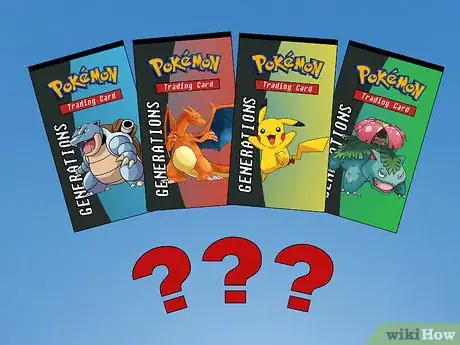
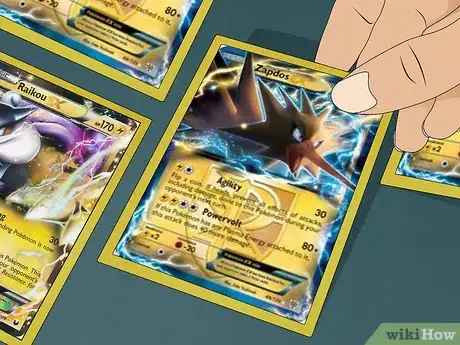
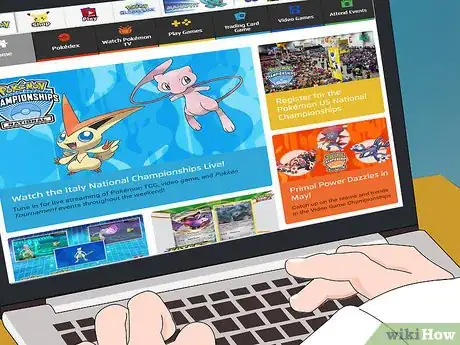
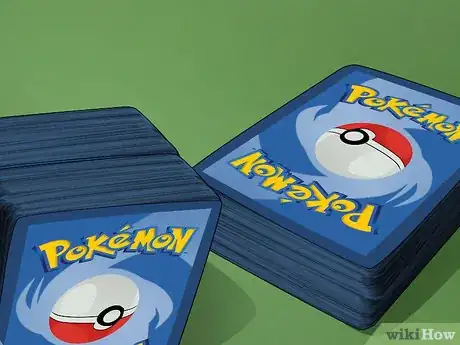
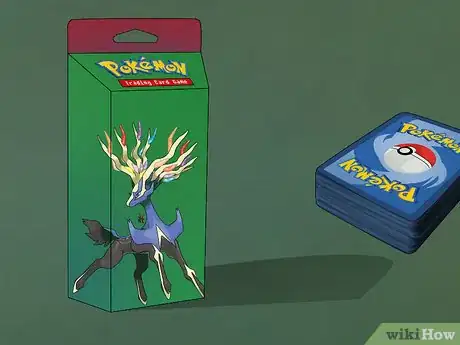

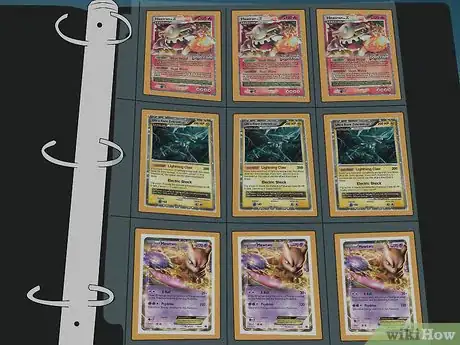
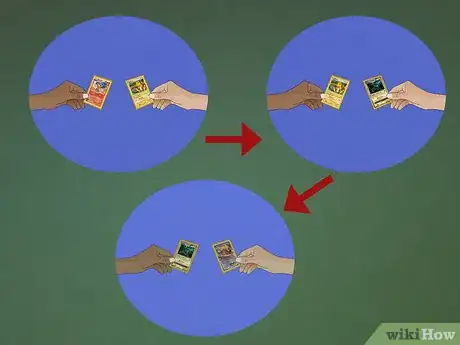
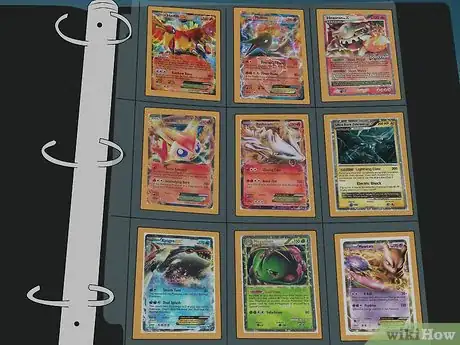
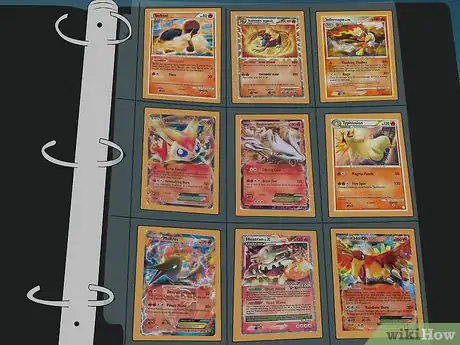

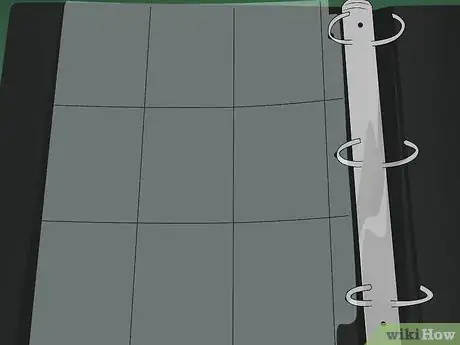
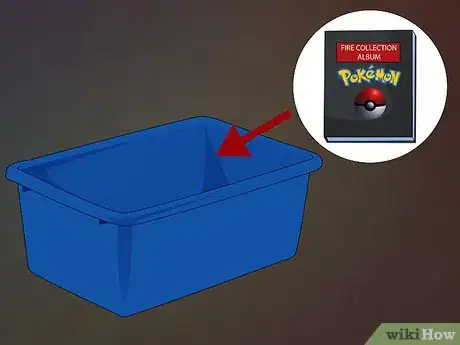
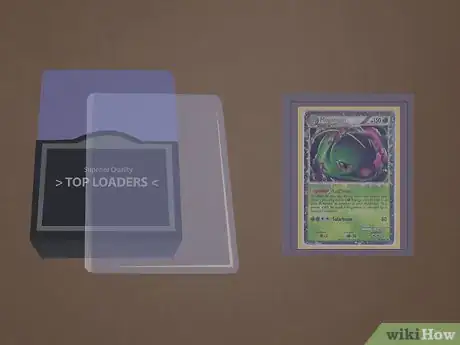
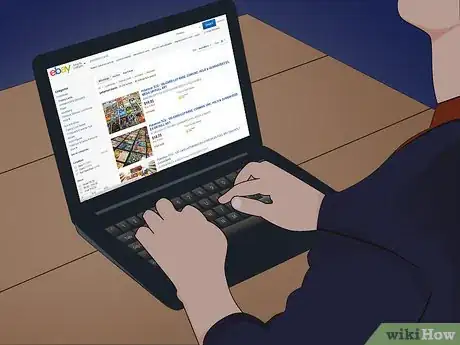

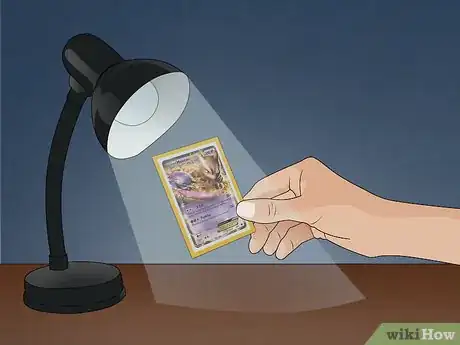

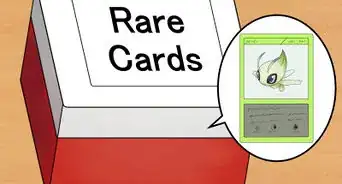
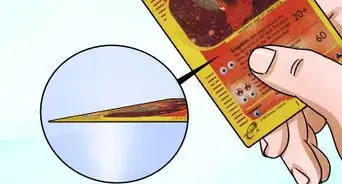
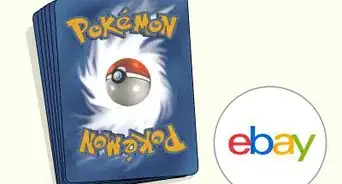
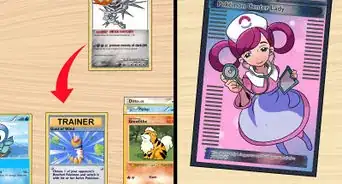
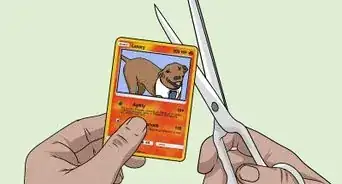

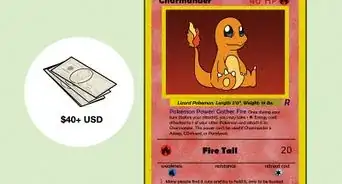
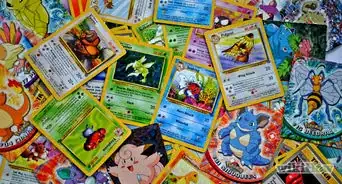
-Step-8.webp)
